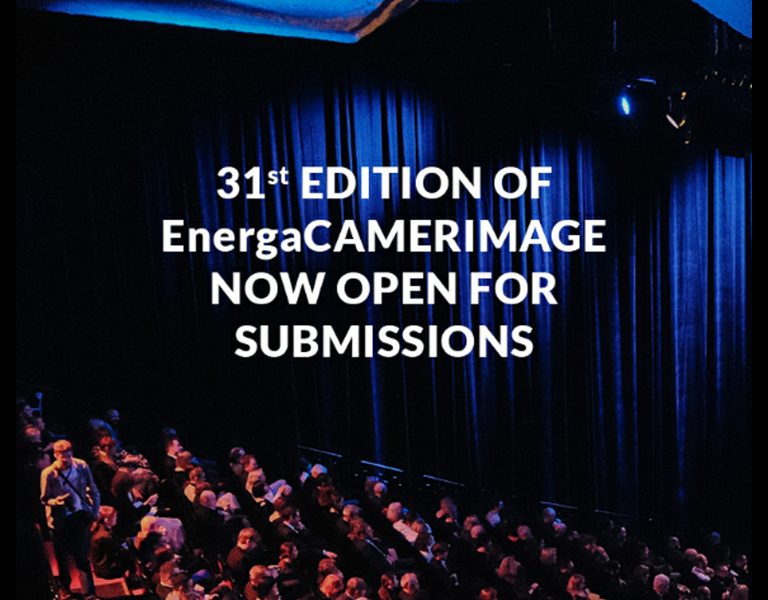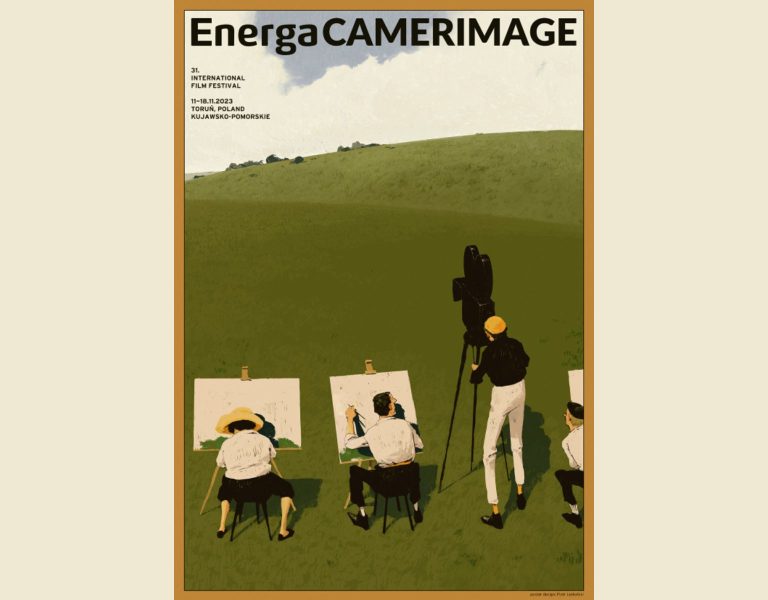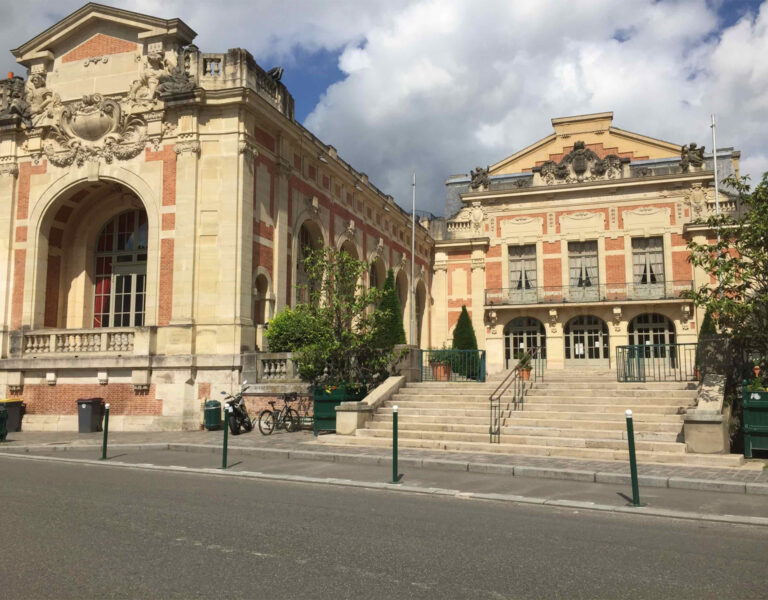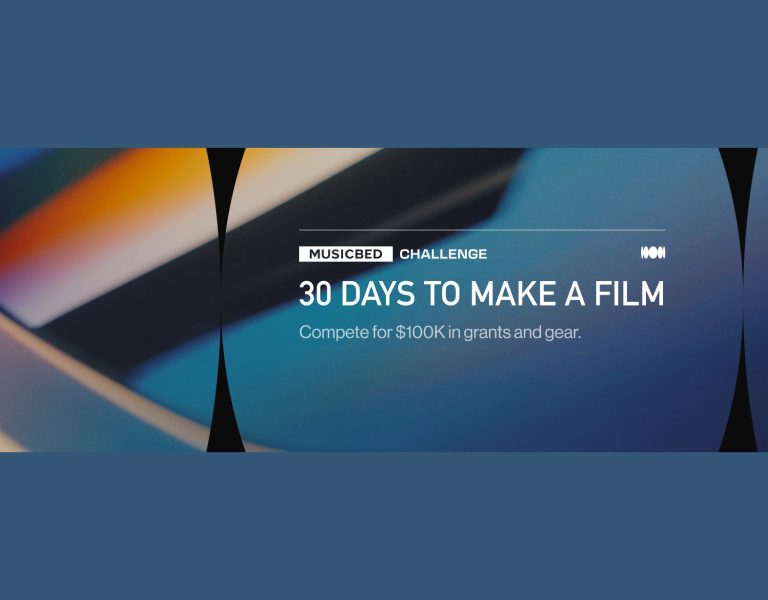Home » Features » Opinion » Across The Pond »
Fresh from the faux cityscapes of the Paramount backlot, our LA columnist Mark London Williams reflects on another bustling Cine Gear Expo and delves into the lensing choices of two ASC cinematographers.
The first thing to note, in this dispatch from the side of the pond kicking off the month celebrating July 4th, with its particularly American blend of charred meat, erupting gunpowder, and emergency room visits, is that any claim we can make about the “news” will be outstripped as we inch closer to the “Bastille Day” part of the month.
And by “news” we mean, in this instance, “the strike” around which all of Hollywood is focused (studio executive utterances along the lines of “what, me worry?” notwithstanding).
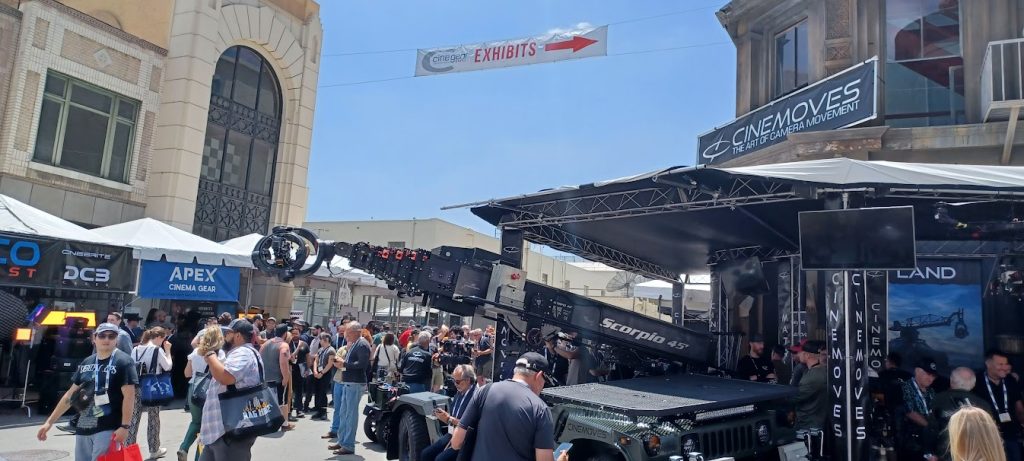
Given that the Directors Guild settled with producers faster than you could say “we absolutely have your back,” a lot will now depend on “the players”, as our thespian friends were once known, and whether SAG also settles with the AMPTP. There are conflicting reports at press time – “talks are going well and could be extended!” and “unnamed sources say they’re still far apart on how to reckon streaming numbers” – and well, if the talks are extended into July and through the holiday, should the WGA be worried?
An agreement would likely signal a change in narrative – which will be pushed by the AMPTP – that it’s only those writers, busy overthinking things as usual, keeping everyone from getting back to work.
Also as of this writing, the current WGA strike is past the 50-day mark, as it barrels toward the 2007-08 “100-day mark”, which would be reached in August. Actor settlement or no, it’s hard to imagine a resolution by then. For one thing, studios would have to deign to talk to the writers quickly and actually hammer out a contract – even if they already have two different templates in hand. So on to Labor Day we head.
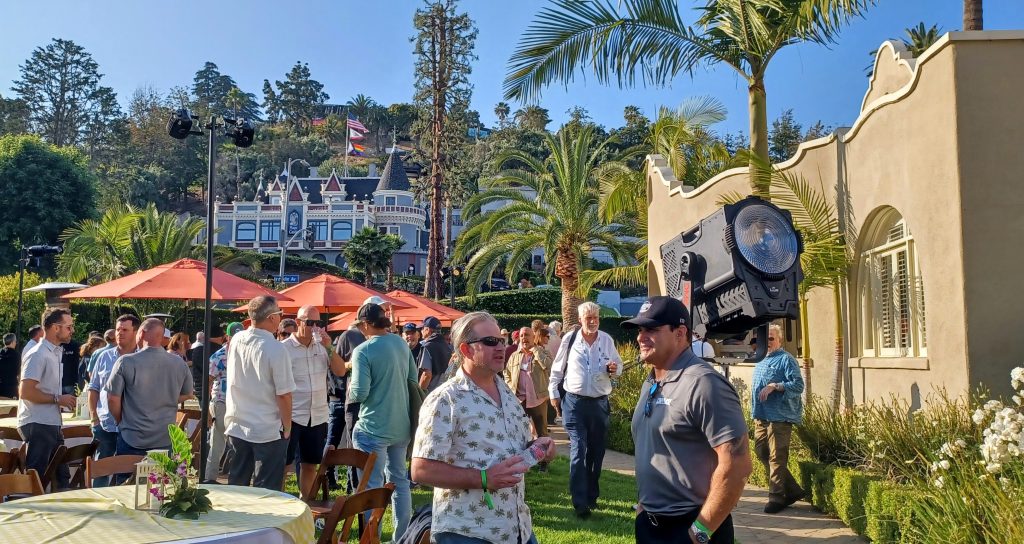
Expo exploits
So whether everyone else will be getting back to work anytime in the near future – gaffers, grips, go-fers, and the rest – remains an open question. Unsurprisingly, speculation on how long the strike might run was one of the main topics of conversation during what turned out to be a very well attended Cine Gear show to kick off June.
As we mentioned last time, the show was returning to its usual avenues and alleyways on the Paramount backlot. One well-known ASC member there told us it was likely a summer to settle in for some beach reading, rather than getting overly worked up about dynamics that were out of the hands of anyone actually there at the show.
Later, at the ASC barbeque at the Society’s storied Hollywood clubhouse, which always serves as a concluding bookend to the event, there was even more speculation about how long a strike everyone should gird for.
The consensus, increasingly common around town, seemed to be that at a minimum, studios and streamers were going to wait until force majeure clauses kicked in, which in many cases should start to happen during the very July in which this column runs.
That would allow companies to shed many of the overly enthusiastic production deals they made at the height of the perceived streaming boom. Some BBQ speculation was that end of September-ish was a likely window for resolution. One award-nominated DP was heading home to rest up for the fast-food commercial that comprised his main work for that week.
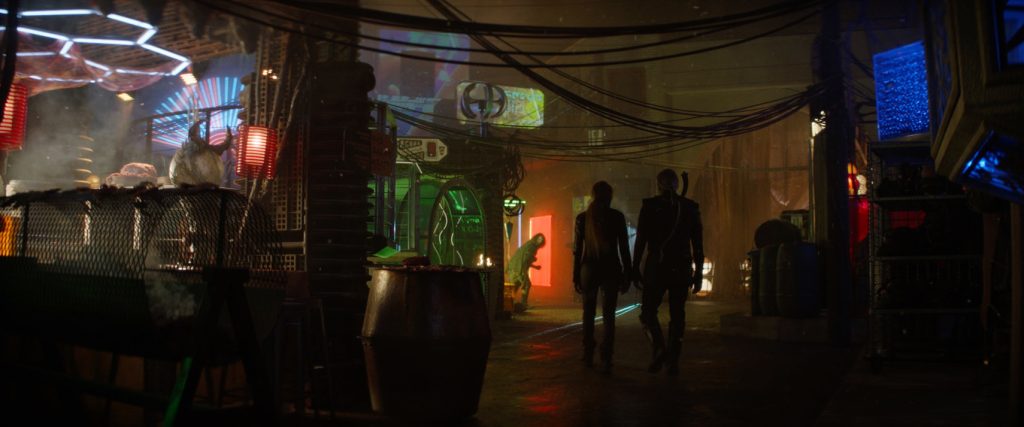
Enterprising lensing
Certainly, if the actors go out, that will also shut down FYC season in its tracks, to whatever degree it’s sputtering along now, and also delay or cancel the Emmys. And of course, if those events are cancelled, that means fewer spotlights on all the crafts folk – whether cinematographers, editors, costumers, makeup or more – hoping to help steer their own show, and their own work toward a nomination, or at least some recognition among the current deluge of “content”.
Leaving much to happy confluences, such as when we ran into cinematographer Jon Joffin ASC, who came by as we were setting up BC’s Cine Gear booth, which turned out to be located somewhere in between the ASC’s and WiM’s (Women in Media), along one of those New York, mid-century faux-city streets.
We complimented him on his recent good work in both Schmigadoon!’s second season and Star Trek: Picard’s final one, and said we’d love to catch up with him when he had a chance, having been both a lapsed playwright, and a long-standing Trek fan. Publicity on the crafts side of the latest voyages of the good ship Enterprise, as with many other shows this season, while diligent given current conditions, is still a bit diffused – perhaps in the manner of someone using a transporter who hasn’t quite fully resolved yet.
At least on the show’s cinematography side, so there we were, a couple weeks post-Cine Gear, catching up with him again from his home in Vancouver.
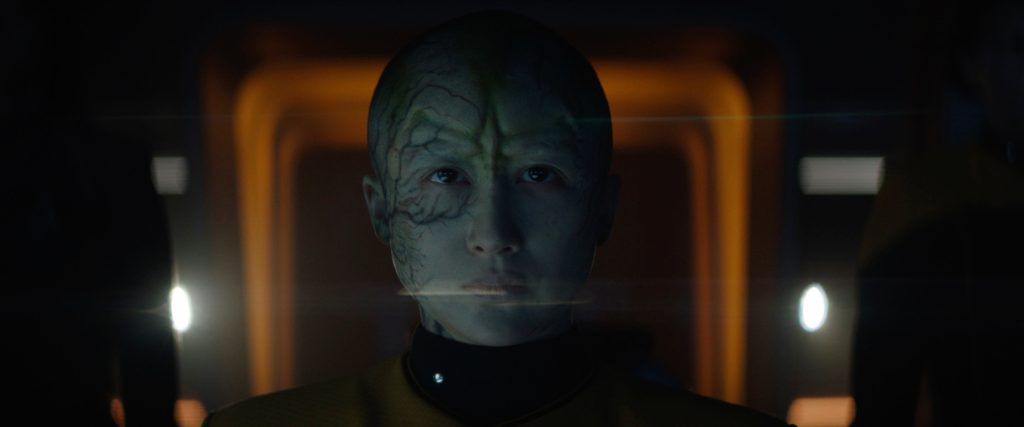
When Joffin was approached by producers Terry Matalas and Douglas Aarniokoski, he said they were, in turn, approaching that last season with “a certain feeling that The Next Generation never got their final feature film. This last season would be like the TNG feature film that never happened.” (Viewers may recall that Picard’s concluding season was divided into “parts” rather than discrete episodes.)
Joffin, who bookended the first and last pair of episodes (with a couple more in the middle, for good measure), wanted it “to be darker, bolder, and more like a feature film”.
Though interestingly, not necessarily like one of Star Trek’s feature films. One storied sci fi franchise entry that spoke to him was the Star Wars entry Rogue One, for its dark themes and visual motifs – lighting, design – throughout. He also mentions the highly regarded series Andor, which, like Rogue One and Picard, also melds existential and political themes in space.
But it’s not as if all his inspirations came from that other great cinematic space universe. “I love the J.J. Abrams’ Star Trek too,” he adds. And besides, he says he was working with “such great faces” – like Sir Patrick Stewart’s, Jonathan Frakes’, and LeVar Burton’s – that “they deserved closeups”.
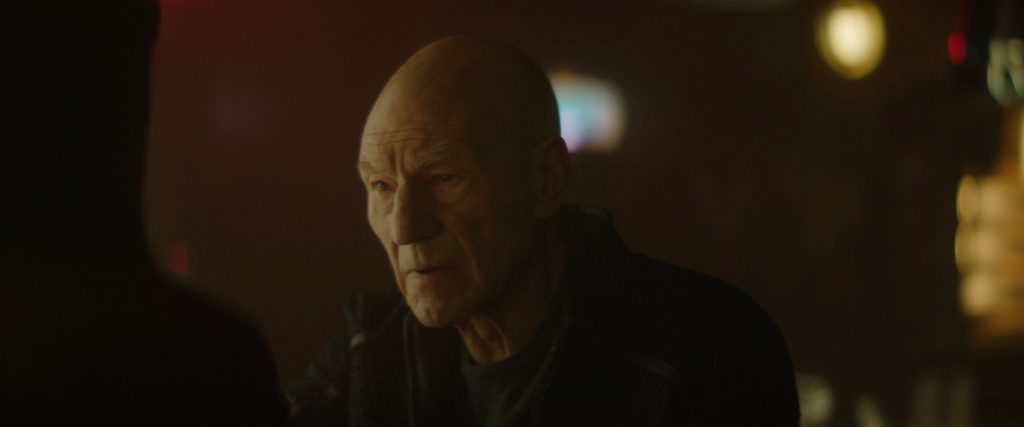
The other great “face” that was returning was that of the Enterprise-D itself, or at least the bridge, as seen over numerous seasons of TNG. The recreation “was to the inch accurate”, he says, and while they didn’t want to change it they did “want to give it a modern lighting feel. We were working a fine line on whether it was too dark, or too rich. We kept it to the brightness of the original” in terms of light, though during battle scenes, things grew not just metaphorically, but literally darker, as well.
Another shift, working with Len Levine, his “amazing gaffer”, came during the showdown with the all-consuming Borg. While Borg colours “are always green” (though far be it from a species where emotion is verboten, to proclaim a favourite colour), previously, he found it to be “like a stagey green”. Working with not only Levine, but production designer David Blass, who approached the show more as a historical piece, than a science fiction one, Joffin wanted “this green to feel industrial. We built the whole (Borg) lair around this green look which was more real.”
Capturing these reworked colors and classic faces was an Alexa Mini. Even though Joffin proclaims himself “a huge Venice guy”, Minis were already being used for the show’s second season, and they were already prepping the third season when he arrived. The cameras, however, were lashed to “Panavision anamorphics” which, he adds, really did give the show even more of a “Star Trek movie” look, particularly with the additional tuning provided by Panavsion’s renowned senior VP of optical engineering, Dan Sasaki.
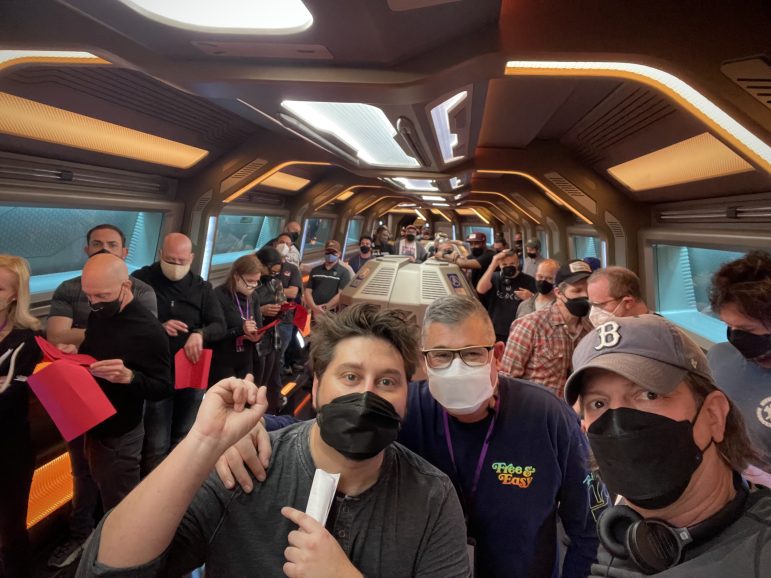
Additionally, while shooting at the Santa Clarita stages just outside of Los Angeles, they also made frequent use of an M7 Evo remote head from Chapman/Leonard, an “amazing tool (where) the A camera lived”, and an oft-used Technocrane.
Along, of course, with their own ingenuity, particularly as they came toward the end of the season, and thus, a time when “the visual effects budget was starting to get thin.” One key scene, with Picard’s recently discovered son Jack (who he’d had, unbeknownst to the former captain, with TNG’s ship doctor Beverly Crusher), involved a dream about the Borg, and a shift outside the windows from the cold of space to “warm, beautiful sunlight” – before it all turns cold again.
Working with only about four hours to shoot, they used “trusty old Par Cans on the windows”, along with a “big Sourcemaker light (shot) through magic cloth”, and managed to get the effect, and spare the VFX budget all at once.
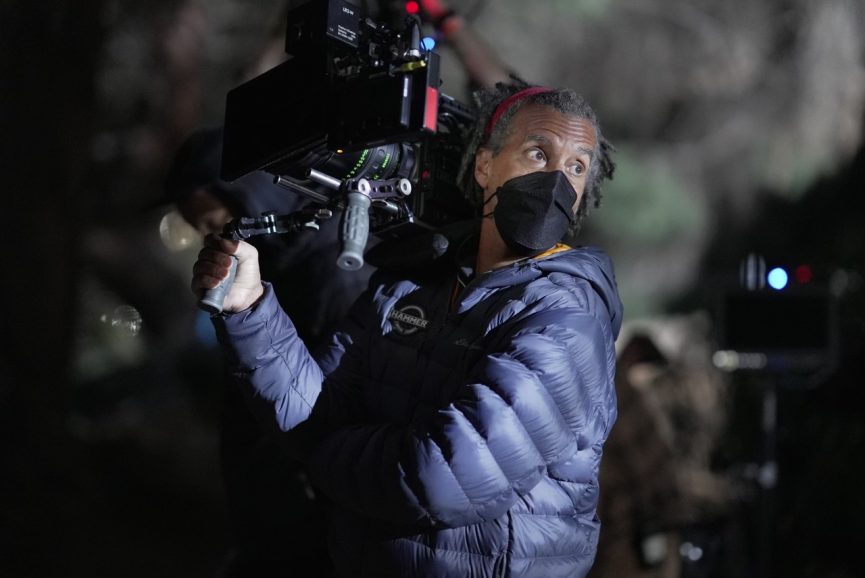
Spooky shots
Also mindful of stretching budgets, as well as incorporating some “dirty green” into the scene, was cinematographer Todd A. Dos Reis ASC, coming off a run on the series Bosch: Legacy to shoot the recent horror comedy The Blackening.
Set in the proverbial cabin-in-the-woods, the story finds a group of old friends reuniting, and up against, once again, a mysterious, slash-happy adversary. Except that the friends are all African-American. And they find they are also up against all the tropes of what happens to black characters in horror films, as expressed in a self-aware board game left for them to play, called “The Blackening”.
Dos Reis already had a relationship with director Tim Story, with whom he’d done some pilots. “We started researching for this horror comedy,” and wound up looking at Get Out together, and Don’t Breathe for its use of claustrophobic space. They also referenced a lot of the horror pantheon, such as Owen Roizman ASC’s work on The Exorcist, and Daniel Pearl ASC’s on Texas Chainsaw Massacre. Their approach, he said, was that Story, who Dos Reis describes as a “master at comedy” (he directed Barbershop, and projects with Kevin Hart, among many other credits) would “direct for the comedy (and) I would compose for horror. Normally with comedy, you have to be bright enough to see (it),” while horror, of course, would traditionally be much more shadowy. Though in this case, he wanted his audience to see the humorous part, “but barely”. There’d be a lot of give and take between Story thinking things were “too dark” and Dos Reis saying “don’t make it too bright.”
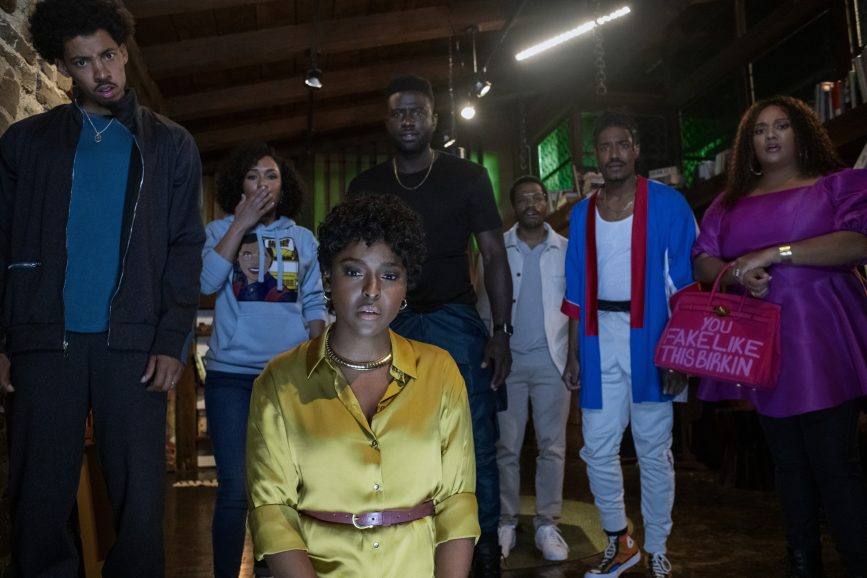
All these tonal shifts were captured with a RED Monstro, equipped with two Zeiss Super Speeds, which he liked for their ability to capture “darker interiors (and) darker skin tones”.
Dos Reis also liked the original Venice – he notes the Venice 2 hadn’t come out yet – and tested that along with the RED, but went with the Monstro because “the contrast was a little better.”
Another successful contrast, in the manner of getting day to pass for night, was getting locations around L.A. to pass for wilderness settings. The primary “cabin” was actually a house in the city’s posh Brentwood area. The game room, where “The Blackening” lay waiting, was “also at the Brentwood house. I brought in a specific light for the game – a practical top light.”
Outside of that – and sometimes, literally outside the main set – he was inspired by the lighting in Don’t Breathe, including that little bit of “dirty green”, meant to invoke sodium light and coming from some LEDs they placed.
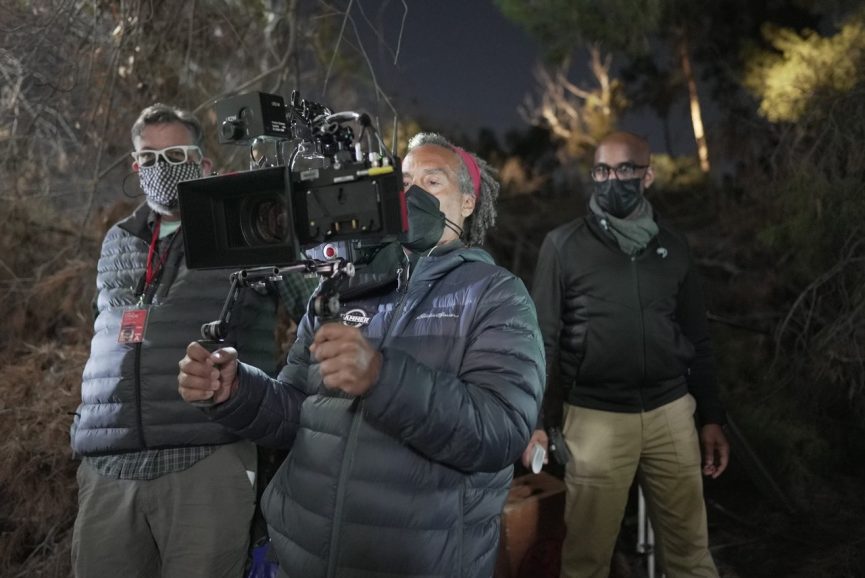
For the even spookier basement – and sub-level – areas, they used “another house in West Adams”, closer to downtown. “No one lives there,” he adds, and it’s only used for shoots. Even forest and lake exteriors were doubled around town, with one outside fight sequence being shot “overlooking Dodger Stadium – we had to black out the Dodger baseball playoff games,” blazingly lit in the distance.
The speedy 20-day shoot – “mostly night work” – was also “helped out a lot” by the good folk at Otto Nemenz.
And though this was his first horror project, “I’d be happy to do another one,” Dos Reis says, though as with many in these strike-strewn times, he awaits his next project. As for The Blackening, “hopefully this movie captures the zeitgeist.”
Perhaps the most worrisome thing, in a film where no is quite sure who they can trust, is that it actually does.
We will see you in a month, after July’s traditional celebrations of upendings and upheavals.







